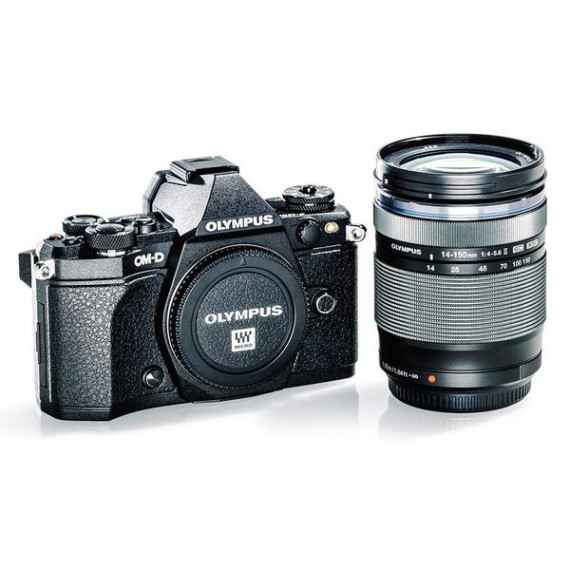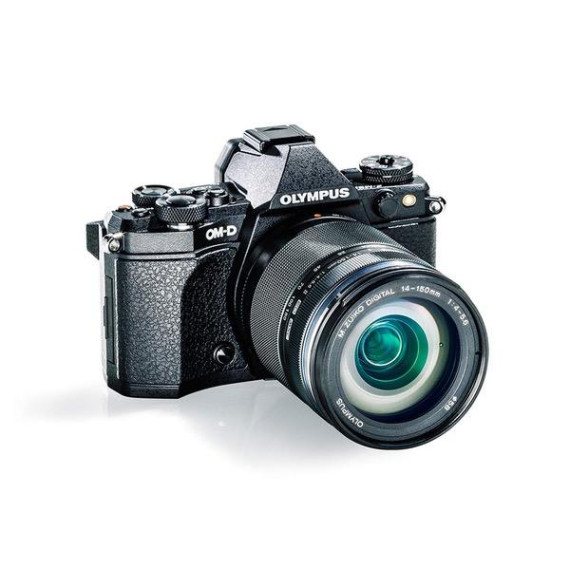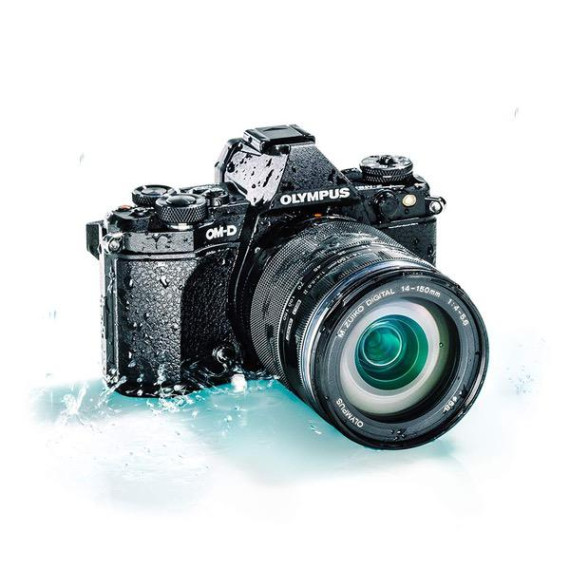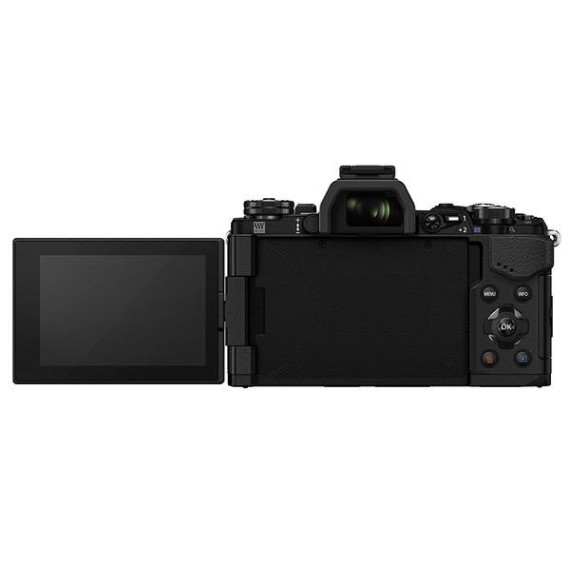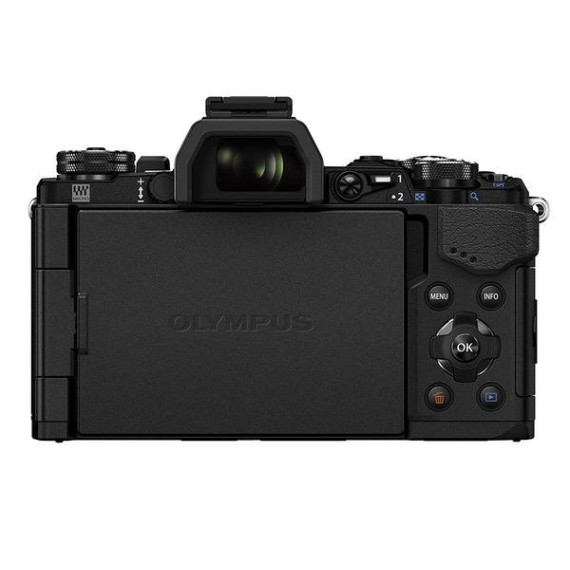R. Williams
If you are the type that likes a straight-forward, concise review, look elsewhere. Below I try to document my thought process as I compared the likes of the Olympus EM-1, EM5ii, Sony A7ii, A6000, and Nikon D750, and why I finally settled on the EM5ii. Like most enthusiast photographers who spend any time online reading reviews, when it came time for me to upgrade my Nikon D40 from 2006, I lost track of my original goals for upgrading (more customizability, video capabilities, low light performance) and got sucked into the world of "gear acquisition syndrome". Originally confining myself to other APS-C Nikon DSLRs in order to re-use my lens collection, the D7100 became the obvious choice. Until I realized that the size and weight of the D7100 was not much different than the D750 - which at the time was filling every review site with A+ raving reviews. I fell into the rabbit hole of full frame and convinced myself that if I was going to carry a camera all the way to Israel or Korea (some upcoming destinations of mine), then it would be foolish to bring anything other than a full frame which would be guaranteed to get the job done regardless of lighting conditions. I rented the D750 and fell in love with its incredible ergonomics and handling, not to mention the razor sharp IQ. I was very close to buying it, but then a pro photographer friend pointed me toward the Sony A7 mark II which was just hitting the markets. It boasted a similar 24mp full frame sensor, but in a smaller package. When I began reading reviews, it seemed clear that Sony was innovating in ways that Canon and Nikon hadnt done for years. Being mostly interested in travel and street photography, the appeal of a smaller camera body was strong -- without compromising the full frame quality which I was convinced I needed. Again, wanting to make the best buying choice possible, I rented the Sony A7ii for a weekend to see how I would like it. I got to shoot both daylight in the snow and nighttime, and got great results for both. However, the ergonomics left something to be desired - e.g. the on/off switch was dangerously close to the aperture dial, the switch from auto to manual focus was cumbersome, etc. Also, despite the smaller body, the weight was almost the same as the D750. The most concerning aspect of the A7, however, was the lens selection. Im a huge fan of fast and compact prime lenses, which simply dont exist for the FE mount. Adapters abound and seem to be everyones go-to to fill their lens needs, but I wasnt particularly happy about the extra costs involved or the look/feel of the adapters, or the fact that these lenses would require manual focus which isnt a fun experience on the A7ii. But what the Sony A7ii did show me is the incredible impact that in-camera stabilization has on the photographic process. It is well known that there are a large number of "looks" you just cant get without a tripod, e.g. the smoothing effect of water that happens beyond 1/2 second shutter speed. But like most street or travel photographers, the thought of carrying a tripod everywhere is not my idea of a good time. But with the IBIS of the Sony A7ii, I was able to take shots up to 1 second that I was happy enough with to keep. Granted, they werent tack sharp, but they were usable at reasonable resolutions like posting to Flickr or Facebook. For my travel photos, thats all I wanted. At this point, I was in a bit of a crisis mode. It felt like there was no camera that combined everything I was looking for. I was simultaneously sliding more and more into full frame envy, while also being tantalized by the thought of a pocketable interchangeable lens camera system. I knew full frame demanded a certain size, especially in the glass, that would never be as small as I was hoping for. Luckily, at this time, I stumbled upon a few of the rare level-headed videos on Youtube discussing sensor size differences. One that really put it into perspective showed how tiny "full" frame was compared to 4x5 or 8x11 sizes in film cameras. Another comment that really helped me shed my full frame zeal was the fact that all modern-day digital cameras, even the entry-level ones, far exceeded the pro-level cameras from only a decade ago. If it was good enough for a pro ten years ago, it is good enough for me today. The Sony A6000 looked really nice and had some compact lens options, but at this point I was wedded to the idea of camera stabilization. And around this time is when the Olympus EM-5 Mark II was announced. It addressed the biggest grievance I had read about regarding the EM-1 (lack of video features and relatively poor video quality), and did so in an incredibly small body. As I started to research the micro 4/3 system more and more, I became extremely impressed by both the lenses already available and the ones which have been recently announced. Both Panasonic and Olympus, as well as other providers like Leica and Voigtlander, are producing top-notch glass across the focal length spectrum. There are not only high-quality zoom lenses, but also fast and compact primes that I love. The EM-5 Mark II was not able to be rented (my usual evaluation of whether I really want a product), so I rented the next best thing in the EM-1. I took it shooting in some caves outside of Austin, without a tripod. The images I got from those caves blew me away. Not only did the stabilization allow me to shoot at 1/8 or slower speeds and still get great shots, but the EVF did a much better job than expected in near-darkness. The camera naturally struggles to AF in those conditions, so I got a chance to try out the manual focus assist, which is amazing with the EVF and magnification, as well as focus peaking. Compared to the Sonys cumbersome AF/MF switch on the A7, manual focus is FUN on the Olympus OM-D system. The other thing I loved was the overall ergonomics and controls. Some people describe it as overwhelming, but I love to be able to customize every little button and feature of the camera to my liking - and the defaults are pretty great too. I feel like the actual button pressing and tweaking of settings on the OM-D system can be done just as fast as on a well-designed full-frame DSLR such as the D750, to more likely capture those vital moments. With the positive EM-1 rental experience, I decided to buy the EM-5 Mark II. The reason I went with the EM-5ii over the EM-1 really came down to three reasons: 1) slight size advantage, being smaller and lighter than the EM-1, and 2) better image stabilization - a full 5 stops is what Olympus cites and my own experience certainly verifies, and 3) better video quality and video features. Some common reasons that people choose the EM-1 is that it has slightly better IQ, but most reviews that say that will be quick to point out that the differences wont be noticeable in practical day-to-day use. Now that I have used the EM-5 Mark II for over a week, I can say that it delivered on all of the areas I eventually decided to prioritize. The camera is very small and fits nicely in my hands. I can carry it without a strap for over an hour without feeling any type of fatigue. It is not very imposing so when I take it out and shoot on the street, I dont feel everyone staring at me (compared with a full-frame DSLR). Right now I only have the 25mm (50mm full-frame equivalent) prime, which is also small and lightweight, and the combination is amazing. The AF speed is almost impossible to believe, and combined with the silent shutter makes for a remarkable street photography machine. The quality of the images is more than I would ever need, and I actually prefer 16 MP to 24 or beyond, since it saves on hard drive space. But definitely my favorite feature is the stabilization. Ive done some shots at a full 1 second shutter speed, handheld with no support, and they came out great! Videos are silky smooth without a tripod, which I am excited to use while traveling to capture all sorts of clips no matter where I am. I have also tried shooting up to 1600 ISO and found the noise at that setting to be barely noticeable. I dont think shooting in low light will ever be a problem with this camera. For all the hoopla that you hear about shallow DOF and the micro 4/3 sensor size, I can say that I have found it perfectly fine for my uses. In fact, when I was doing some flower shots, I accidentally missed focus because the DOF was so shallow (at f/1.8). If you are in doubt about the ability of these cameras to blur backgrounds, just look up some sample shots from the pro Olympus zooms (12-40 and 40-150 f/2.8) or the fast primes (45 or 75/1.8). I cant comment on the other major complaint people have (battery life) as I havent gone on any extended shoots yet, but I plan to keep a spare battery handy at all times anyway. At the end of the day, I realized that for MY particular use cases of street photography, wanting to have the camera with me always, and for traveling all over the world where baggage is sometimes limited, having a camera system where the body AND the lens were small meant a huge deal to me - and that meant micro 4/3. Im no pro, but I still demand sharp images and the ability to capture high dynamic range, and I have no complaints with the images I am getting out of the Olympus OM-D systems when paired with a high quality lens. I dont feel like I have compromised in any way, especially with all the great features this camera has which are not available on the Nikon/Canons. I cant pretend to know what you are after in a camera, but I can say that you should think carefully about whether you REALLY need the latest full-frame megapixel-chasing pro camera. The difference is not just the $$$ but also the difference between whether you actually want to carry the camera around with you everywhere and use it for what its meant for - capturing moments that are worth sharing with people. PROS: - Image stabilization is a game changer and changes the day-to-day photographic process. Leave your tripod at home and get whatever shots you want. - Camera body AND lenses are small, lightweight, and physically high quality in all aspects: build quality, aesthetics, optics. - Ergonomics and controls on the camera are so flexible that I cant imagine anyone would be unhappy. With the flick of a finger or press of a button, I have access to any setting I want, no matter how esoteric. - Innovative features make it feel like a 2015 camera: stabilization already mentioned, Live View, Live Comp, Silent Shutter that stops down to 1/16000, super fast continuous shooting, focus peaking, manual focus assist, bright and lag-free EVF, etc. [The 40MP high-res shot mode is pointless for my use cases; I havent tried it nor do I want to. It sounds from reviews that it is excellent for product photography in studio settings, but for the average enthusiast it wont be useful.] - Lens selection is second to none. There are so many that its honestly hard to choose your first lens. Ill probably settle in with a trinity of Olympus primes: 12, 25, and 45 - and maybe a cheap tele zoom for those rare long shots. But who knows, theres new ones coming out all the time. CONS - The provided strap and the way of connecting it is not well designed and interferes with ones grip of the camera. I immediately removed it and plan to use a third-party strap system. - I doubt I can push the ISO beyond 3200 with favorable results, but I also cant think of any real world scenario where I would want to. MORAL OF THE STORY Dont fall into the analysis paralysis of tons of camera research, and dont believe what you read online (that includes my own review). Instead, look up real images from normal people like yourself. Then pick a few contenders and RENT them for real-world shooting scenarios. It may cost you a few hundred bucks to rent several cameras, but it will save you thousands in the end. UPDATE (5/31/2015): After shooting with this camera for several months, including several day trips and a week-long trip to South Korea, I can reiterate all of the above. The stabilization system and low-light capabilities of the camera are continually impressing me, and Im consistently surprised by the tack sharp pro quality images that the camera produces. Having now used the camera for some extended shooting, I can give three substantial updates to the above review. First of all, the major complaint that many people say on reviews is that this camera has poor battery life. They must have been using a different camera because I simply do not run into that problem. I purchased a second battery given all the hoopla, but Ive never needed to swap to it (compared to the Nikon D750 where I needed to swap mid-day on one shoot, although granted that was in freezing cold weather conditions). I will say that I am very quick to shut off the camera in between shots, and I also dont tend to take 1000s of photos a day. I usually shoot around 100-200 over the course of a day when I am traveling to a new place, and only charge the camera battery once every other night. I havent had a battery die on me yet. If you are the type who keeps the camera on for long periods of time or shoots thousands of shots per day, then you may in fact see the battery issues that reviewers complain about. But I can say that for my day-to-day battery usage, I see no problems. Again I will reiterate that you can always throw a spare battery in your pocket, since they are pretty small. Second, I have settled on a strap system which I enjoy quite a bit -- the Black Rapid Metro. I was able to walk around long 10-hour days in Korea with the EM5ii and a relatively heavy lens (12-40mm f/2.8) attached, and did not feel much neck or back discomfort at all. I also find the strap is comfortable enough to keep on while on a bus or stopping for lunch, though on a hot day I will definitely remove the strap during those off times just to cool off. The strap provides great mobility and never snags when I bring the camera up to my eye to take a shot. I also have the Black Rapid wrist strap, and since it uses the same connector, I can easily switch between the two as the scenario dictates. I would recommend this system to anyone with a compact mirrorless camera system, and it wont break the bank. Third and finally, I have had the opportunity to use the Olympus Pro 12-40mm f/2.8 zoom lens for a week in Korea. My original fear was that the lens would be too big or heavy. While it is significantly (almost 3x) heavier than my Olympus 25mm f/1.8 prime lens, the weight is not a big deal given the strap system I am using. The size is a bigger concern, as the camera definitely looks more imposing and would stick out a lot during street photography. For that reason I will probably stick to the 25mm/f1.8 for the most sensitive street photo scenarios (and the darkest scenarios where the extra stop of light will matter), but for everything else -- including all my travel photography -- I will be using the 12-40. The range is just incredibly useful, and as all the reviews will tell you, it is incredibly sharp through the full range. The build quality of the lens, including the focus and zoom rings, are top notch. It truly feels pro, and the photos look accordingly. I personally dont need anything wider than 12mm (24mm full-frame equivalent) for my purposes, and the 40mm is enough reach on the tele end for most of my needs. I will probably keep a cheap tele super zoom in my bag for those 10% of cases where you need to zoom in real close, but I dont expect to swap it in very much. I would not hesitate to recommend this lens to everyone with a Micro 4/3 camera, even those like me who normally prefer primes (Steve Huff says exactly the same, even him being famous for loving primes). My usual caveat is that you should not blindly take my advice, but rent the lens and put it to the test. Also Ive added some sample shots that show a few different scenarios -- night, travel, street, indoor, museum, flowers. UPDATE (11/13/2015): Nothing much to add, except to say that I still love this camera, and am still impressed by the pictures that come out of it. I added a few new sample shots. It is an absolutely steal with the price drop ($899 now).



